Thanks for sharing your experience.
My brother has a ratrig vcore 300 and has spent double the purchase money on mods so far, and some were taken of again
I gave a quick look at Public V-Core 3.1 BOM. The first thing I noticed is the presence of a Rapido V2 UHF hotend and TMC2209 stepper drivers only. So, an upgrade to 48v with related TMC5160 drivers is what I would do for sure. So, although the BOM list includes some high performant parts, some upgrades are still needed. What surprises me is that your brother has spent double the purchase money on mods. What mods? I'm pretty sure that once I explore more the BOM I'll find many other needed mods, but not even close to the amount of money spent from your brother.
now ratrig has just done an update of their OS, and my brother was experiencing trouble with some of his previously working things. on a Ratrig you use their OS unless Klipper has a Vcore substitute (which is very likely but I have not looked at it)
If I'm not wrong RatOS is optional. It's just a pre-configured Linux environment built on top of Klipper to simplify setup for RatRig printers. You can just use your own custom Klipper setup. I don't know what issues your brother has, but if he still want to stay on RatOS, he can just downgrade and wait for the new revision or directly enter inside Linux to fix the offending files.
He also found out that since /ratrig is basically one person, he, and he alone gets to decide what and how he updates or designs things. For example this person does not believe that 64 bit is useful and adds nothing' so he only supports 32 bit and still has not upgraded this. that means you cannot use a rpi5 , which is only 64 bit, and since 32 bit is a dying thing some day in the future he will have to, but not yet.
Are you sure? May be at the time of v-core 3 /ratrig was just an individual, but I've read the company recently stated a 10 million annual sales volume. I hardly doubt one person can handle all of this and find the time to design all the other printers. I think is more reasonable to think that he started as an individual and grew into a company over the time. The lack of 64Bit is not a good thing, but if one has an RPi 5 he can always recompile klipper to target 64Bit platforms. Unlike Mellow, RatRit had the common sense to leave the software open source (included RatOS).
the other thing is the printed parts. You cannot use the Vcore parts they supplied, unless you do not care about creep (unless they have changed it since he bought his Vcore). They used to print all their stuff in PETG and within a month or so my brother decided to reprint it all in ABS.
The first thing I learned when I started to study the Voron project is that its parts should only be printed in ABS. Anyway the fix is easy: just download the files and print yourself.
Other then that there are some very nice advantages in a Vcore like electronics bay on the side as standard and three point suspended bed with magnetic balls.
Yeah, a friend from the community told me how much pain is to work with the Voron electronic bay. I was not aware about the existence of the three point suspended bed with magnetic balls and I'm very attracted from the benefits that provides. A big point in favour of RatRig especially because, from what I've read, this mod seems to be not possible on Vorons, at least not without a major redesign. Someone here has ever attempted a challenge like that?' If yes, what about before and after?
as my brother said if he had known everything at the start, he would have bought a Voron. His machine is modded to the hilt and now runs at 400 MM/S and 6000 accel (x and y are different due to umbilical swinging issues and he chose the lowest for both) but it was, and still is, an endless money pit.
Most of us will not want to go down that rabbit hole so chose what you want/need with this knowledge in mind. if you think about it long enough there might be another project of an opensource printer on the market and you have not build any of them yet

The issues you described here, at least for me, are not valid reasons to give up on RatRigs. One thing that I had chance to verify is that initial releases should be avoided at all costs and this applies particularly to RatRigs. In version 3.1 they addressed most (or all?) of the issues and v-core 4 seems much more robust with the weak points on the 3 resolved. I think this is pretty normal in DIY yourself projects, even Voron had to go through different revisions.
In
this video you can see a V-Core 4 500m running at 800mm/s at 30k acceleration without encountering any issues, but on pair of specs, I'm wondering what would the speed on a 350mm Voron. What leaves me disappointed is that in V-core 4 the bed is stationary.
Another concern I'll have to address is expandibility. Most of the mods are designed for Voron and although most of them are compatible, seems that there are differences between V-Core 3.1 and V-Core 4 in this matter.
Apparently Ratrig is the only project that worth to be taken in consideration. All the other similar projects have several limitations with the max size in the first place. HevORT may sound interesting, but going from 350mm to 400mm does not make much difference.



